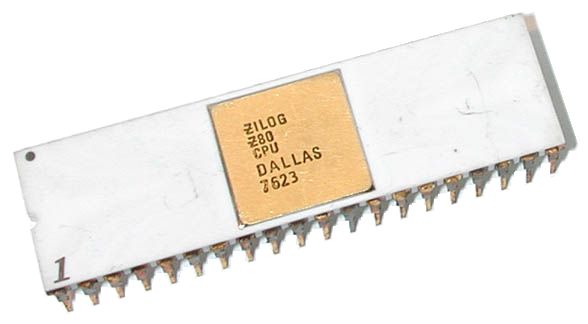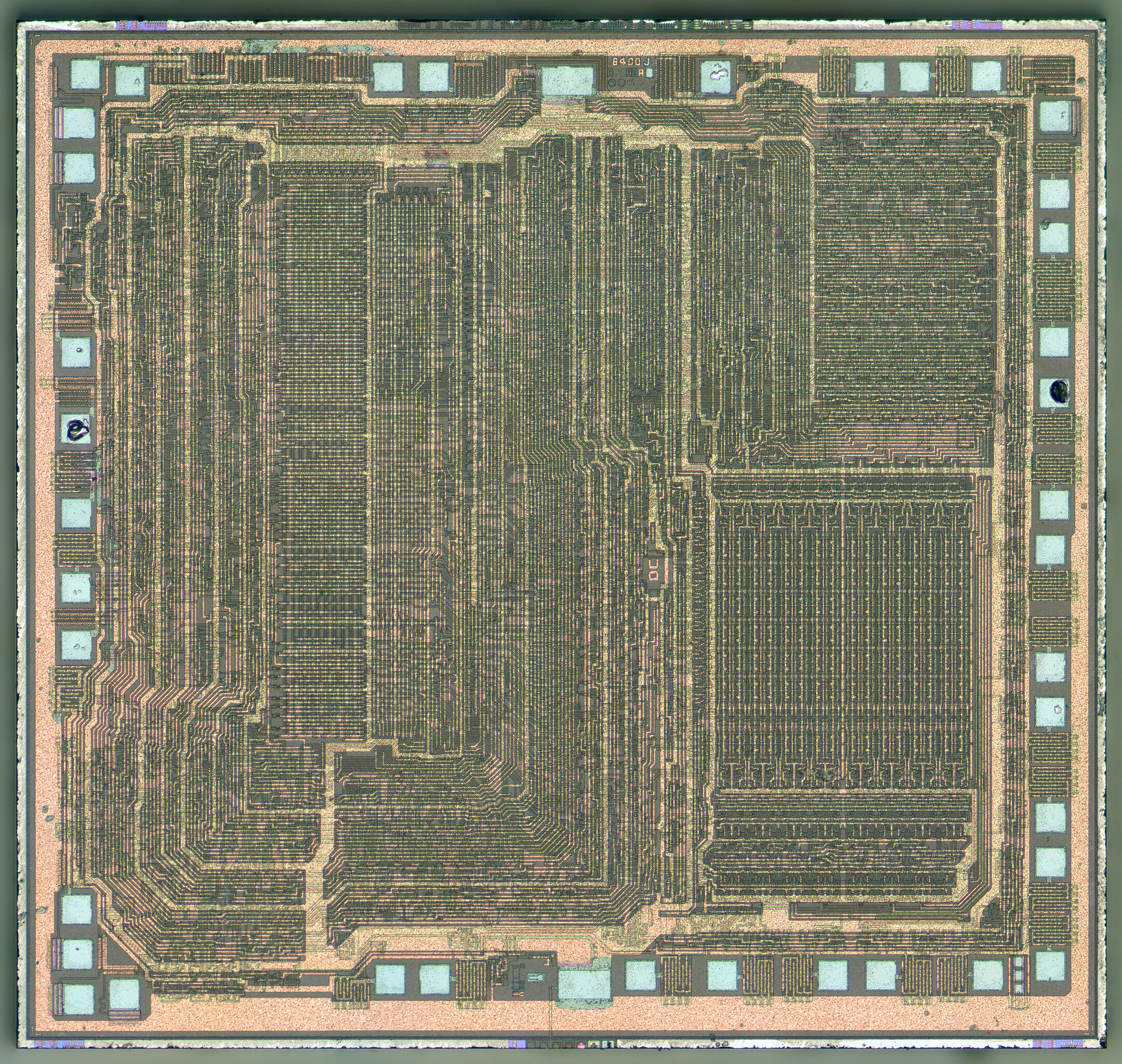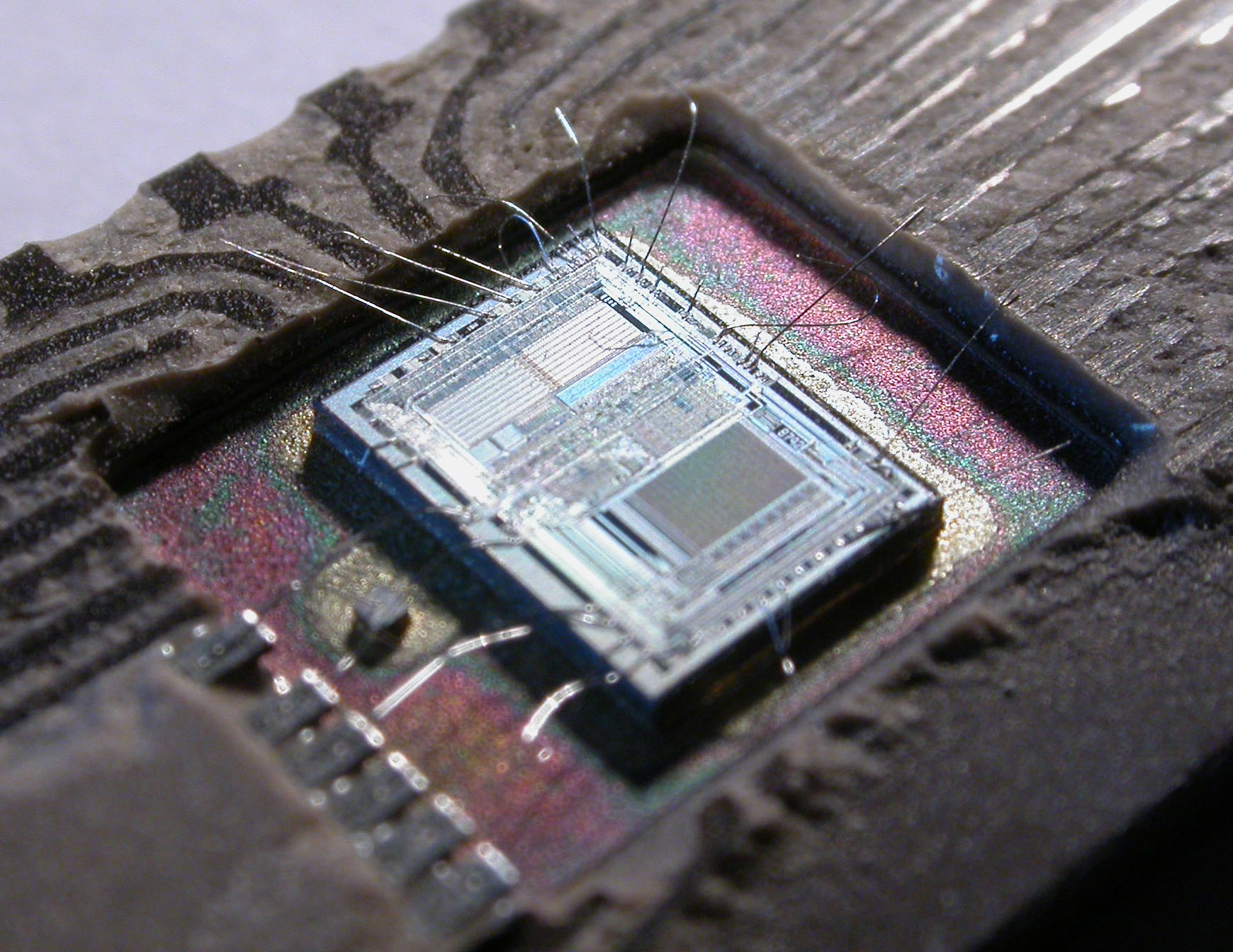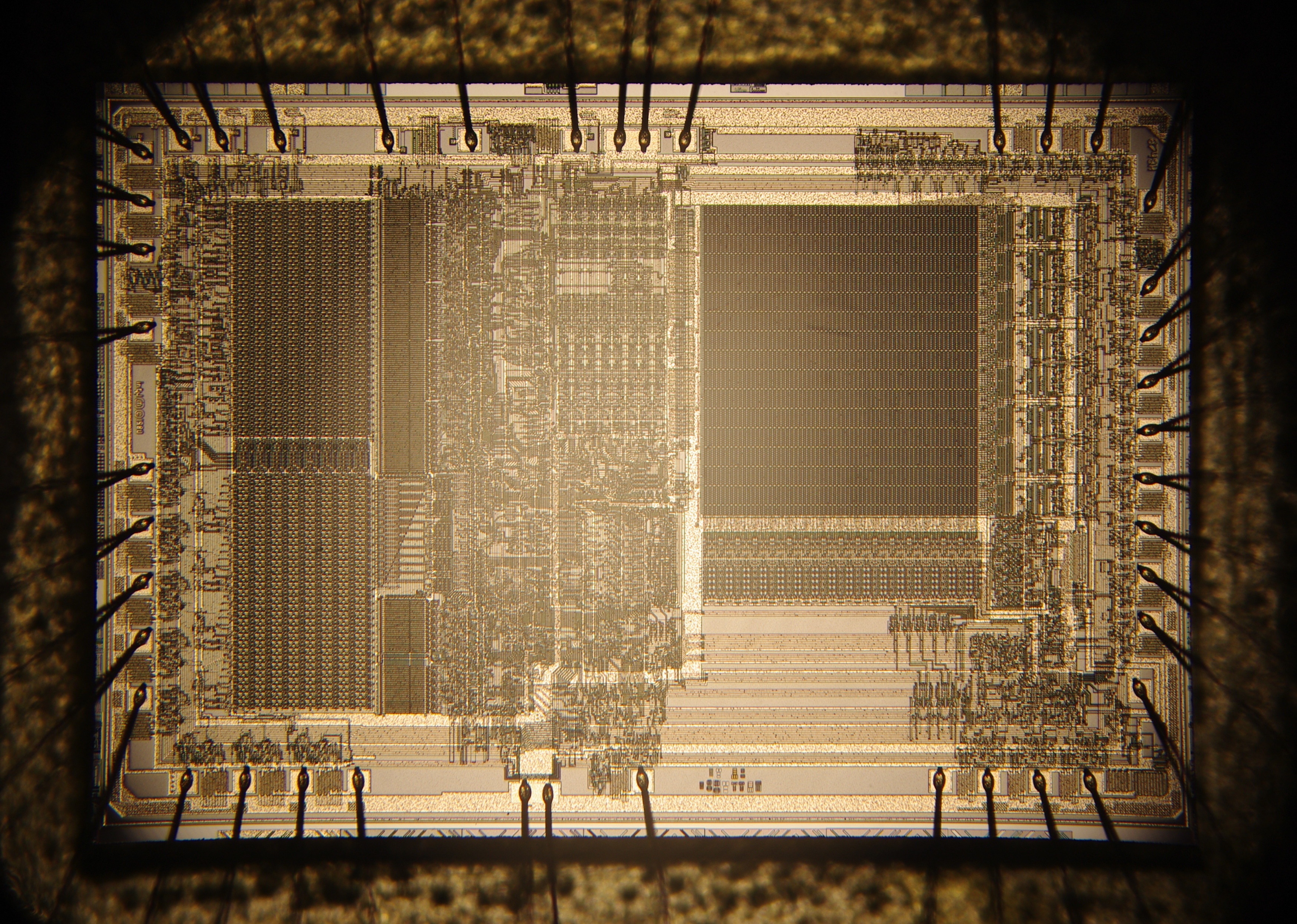An element which stimulates itself will hold a stimulus indefinitely.
-- John von Neumann
Central Processing Unit: CPU; The Processor.
This is the Zilog Z80 Micro Processor, released in 1976 and discontinued in 2024.

The actual chip is 0.35cm x 0.35cm in size, and the rest of the stuff you see is just so that we can connect wires to it. When you remove the protective layers on top and use a scanning electron microscope, you can see the actual transistors inside.

You see the legs on the outside are connected to the big square pads on the chip; there are 40 pads and 40 legs. Check out this picture with the wires sticking out.

This image is from the Intel 8742 microcontroller, but the idea is the same. You can see the wires sticking out from the pads; they will be connected to the legs, and then we can connect them to the rest of the system. This is again the Intel 8742 under a microscope, but you can also see the wires connected.

Before we go further, we will design a hypothetical processor so that you can understand the fundamental parts. Again, everything is about infinite feedback loops, but this time we don't use them to store bits of information, but to execute transformations.
The processor has 4 main components:
- Clock: its heart; every tick it executes the next transformation
- Registers: its working memory; they are just flipflops or SRAM cells
- ALU: Arithmetic unit, calculator; can add, subtract, does basic logic (AND, OR, etc.)
- Control Unit: reads instructions, decodes them and controls the other parts to execute them, and they control the control unit.